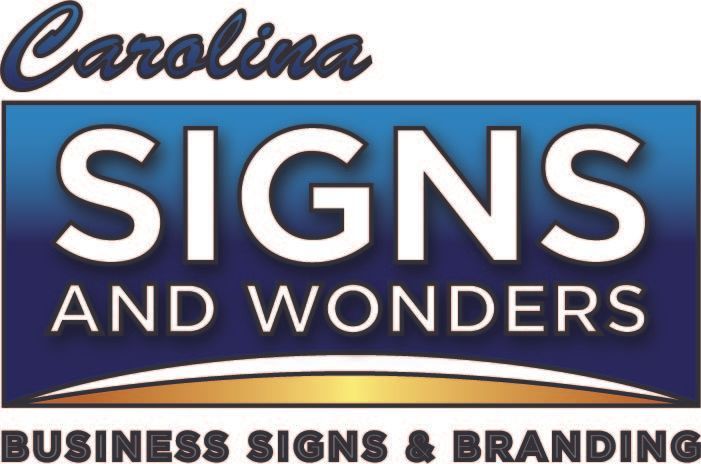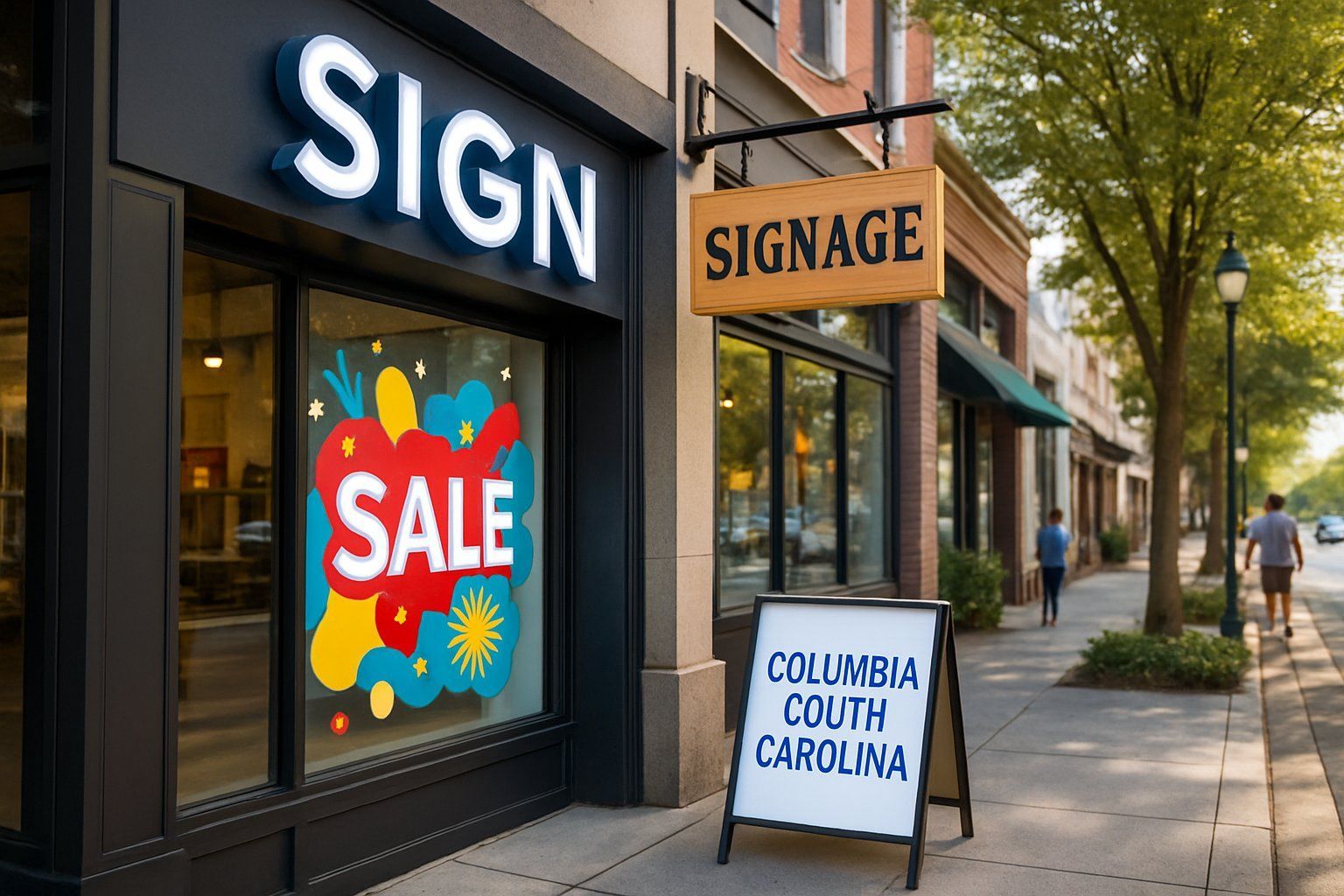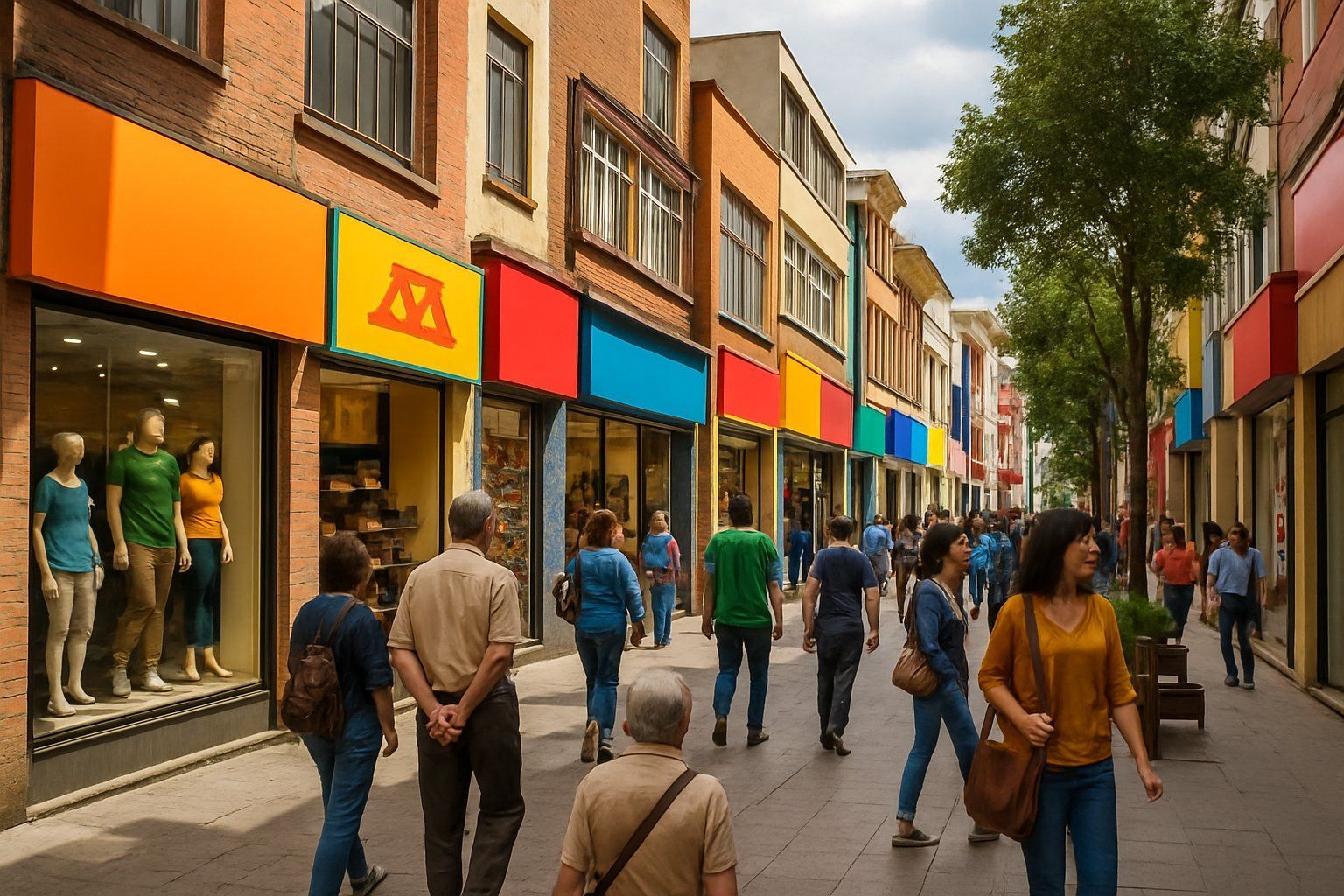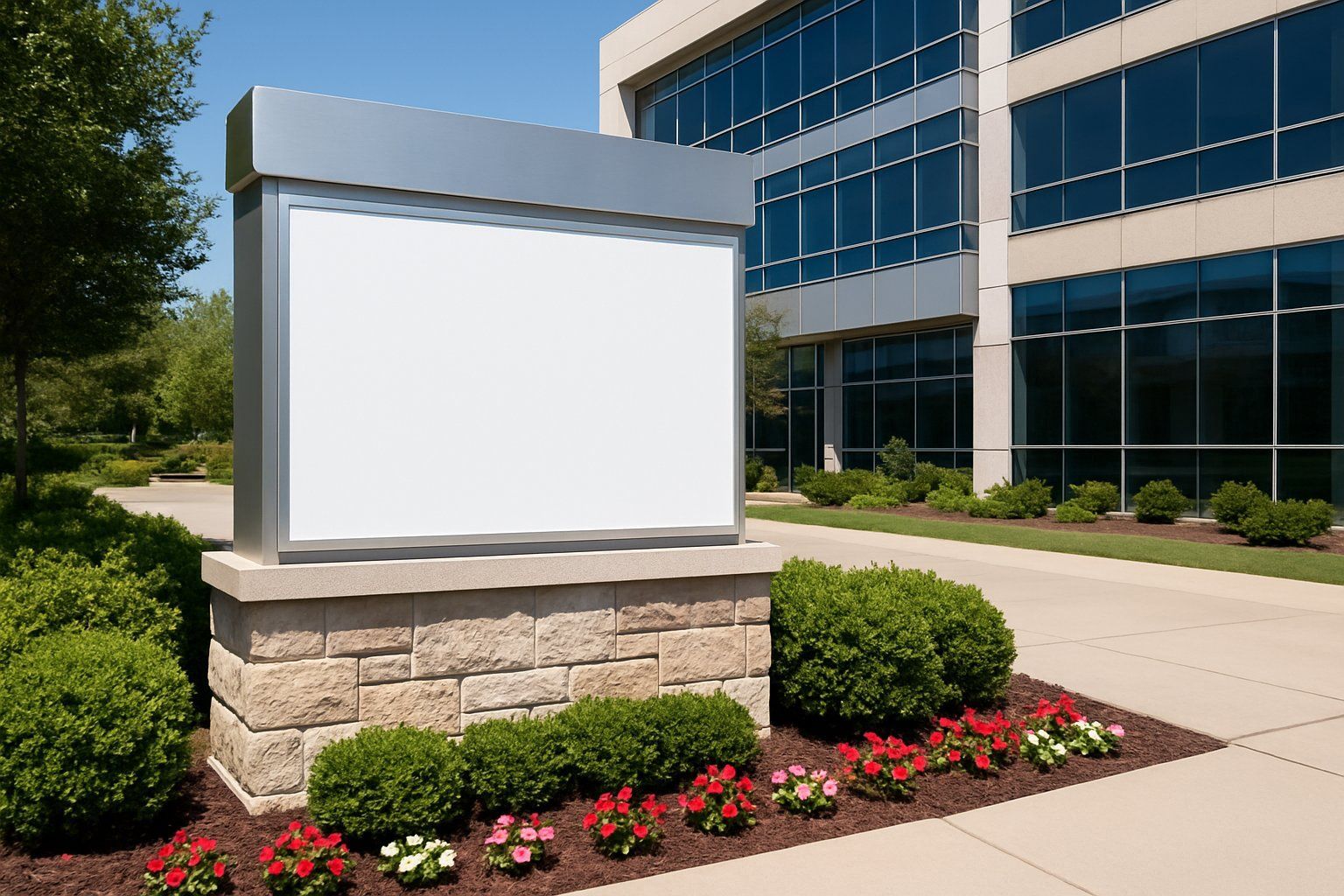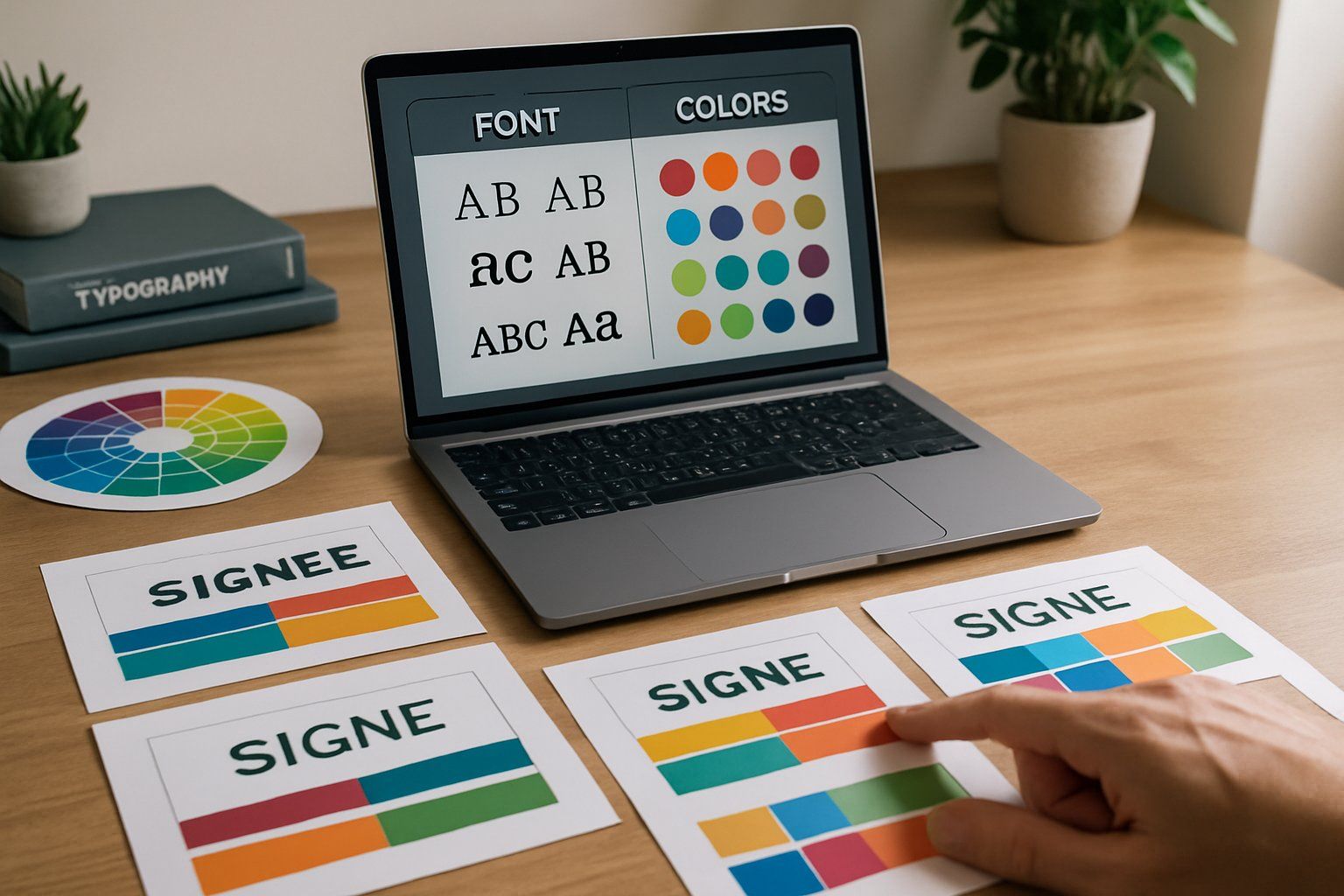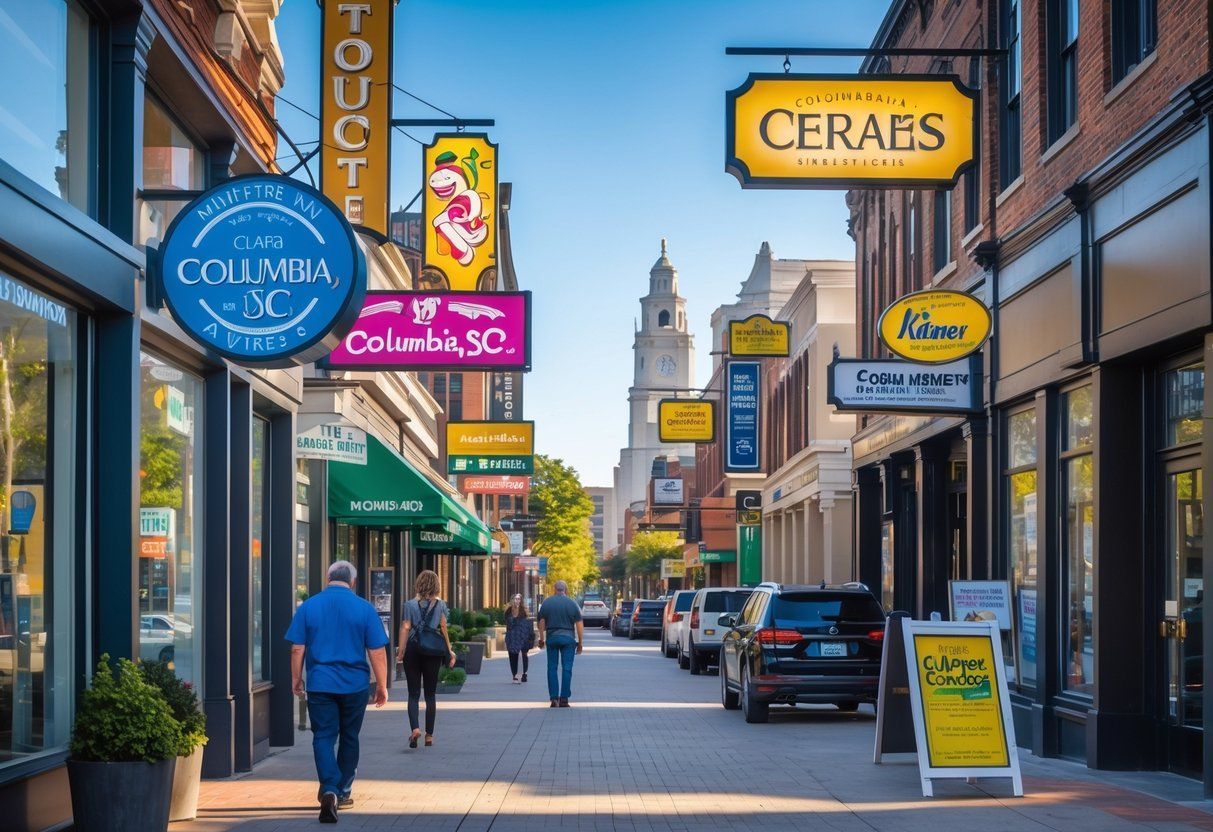The Ultimate Guide to Eye-Catching Storefront Signs in Columbia, SC for Boosting Local Business Visibility
A storefront sign is the first impression a business makes on customers in Columbia, SC. The best storefront signs grab attention, clearly show what the business offers, and stand out from other shops.
Choosing the right sign helps attract more visitors and builds a strong local presence.
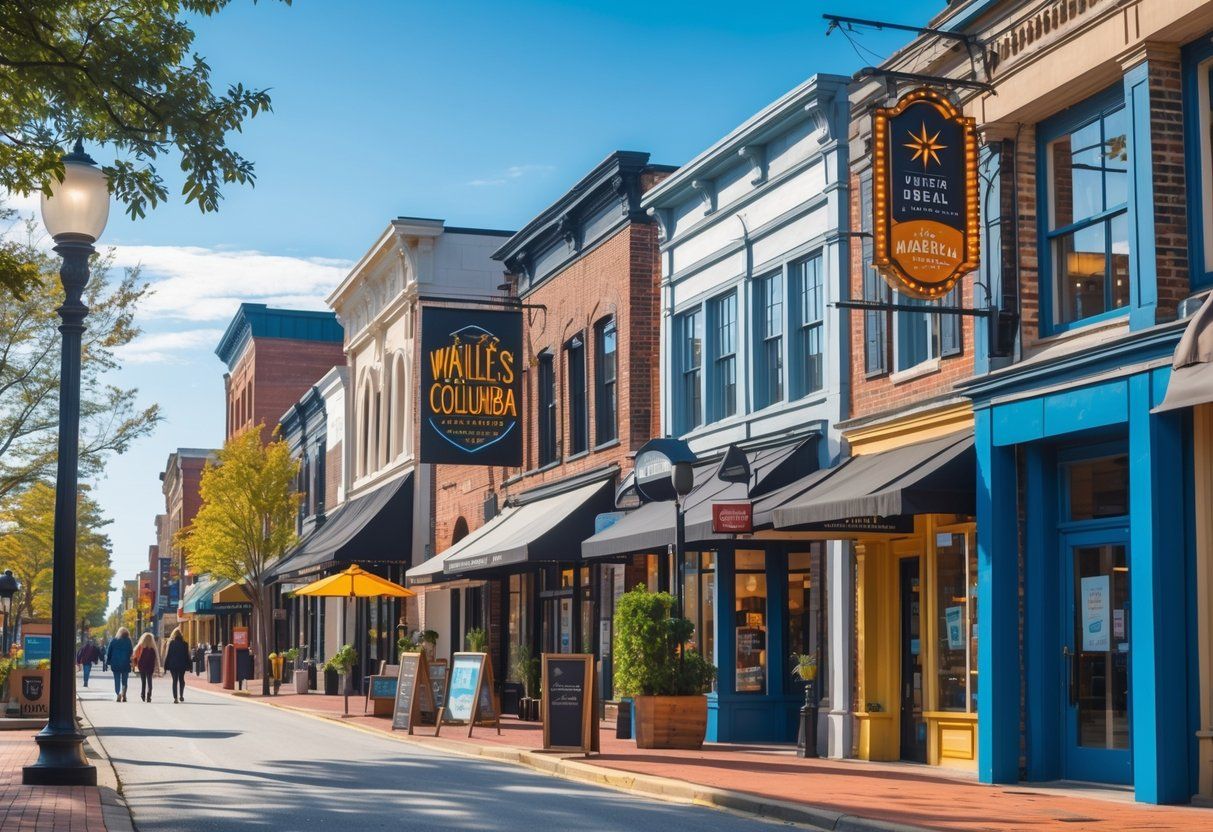
Different styles and materials work better in different areas. Understanding what fits the Columbia market is key.
Good design keeps the sign readable and visually appealing, even from a distance or busy streets.
Key Takeaways
- Effective storefront signs are clear and visually appealing.
- Choosing the right style and material matters for local impact.
- Good design helps increase customer visits and brand recognition.
Understanding Eye-Catching Storefront Signs
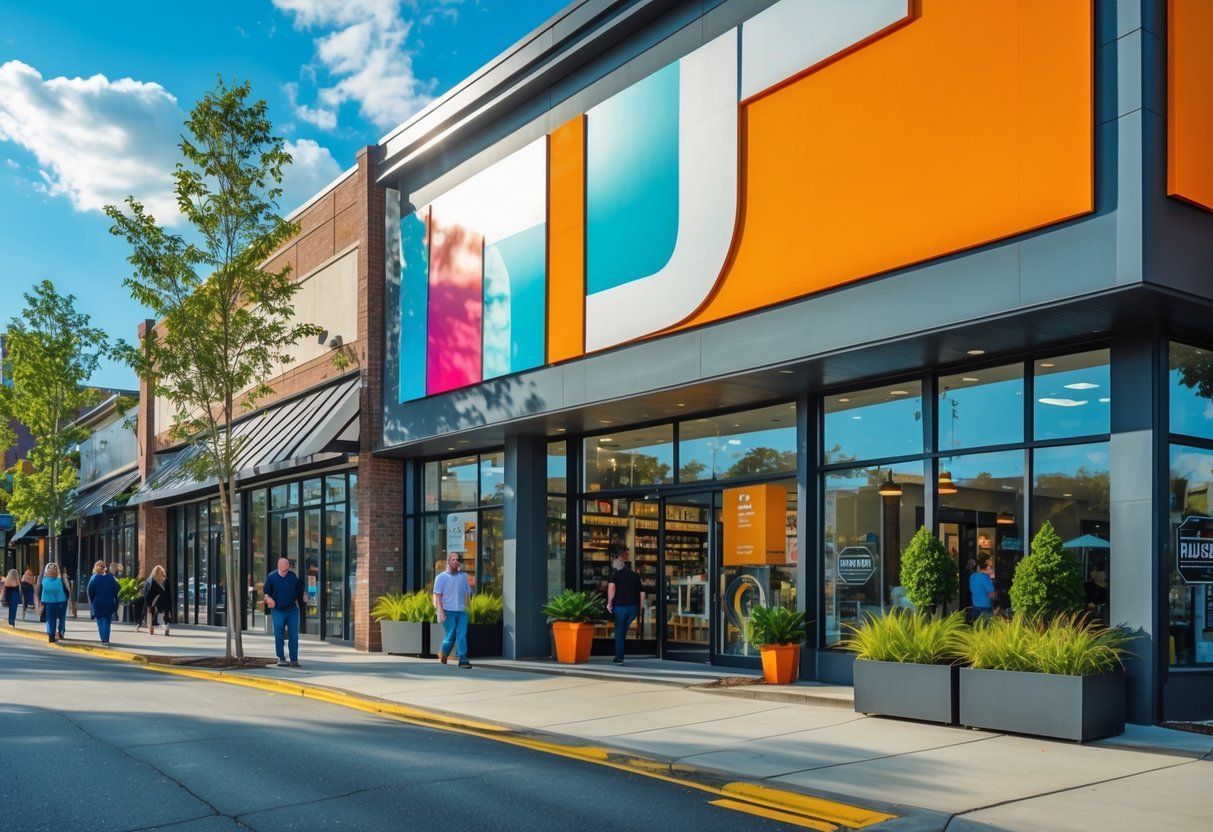
Clear and well-designed storefront signs help businesses stand out. Effective signage uses smart design and strong branding to attract customers.
Importance of Storefront Signage
Storefront signage acts as the first impression for any business. It tells people what the store offers and sets expectations.
Well-made signs help build brand identity by showing style, colors, and logos clearly. A strong sign also improves customer engagement by drawing attention to the store.
In busy areas like Columbia, SC, good signage can be the difference between a customer stopping or walking past. It can also guide new customers by providing quick, visible information about the business.
Key Elements of Effective Signage
Effective signage combines legibility , visibility , and brand consistency . The text must be easy to read from a distance.
Using contrasting colors helps make the message stand out clearly. Material choice matters too.
Durable materials hold up under weather and time, keeping the sign looking fresh. The design should include the business name, logo, and perhaps a tagline that shows what the business offers.
Fonts should be simple and large enough for passing pedestrians and drivers.
How Signage Attracts Customers
Eye-catching storefront signs grab attention through bright colors, lights, or unique shapes. This draws people in and encourages them to learn more about the business.
Signs that clearly communicate what a business sells can increase foot traffic. Strategic placement of business signage, such as close to entrances or busy sidewalks, boosts its impact.
Consistent branding across all signs helps create trust and familiarity. This combination of clarity and style influences customers to choose one store over another.
Design Principles for Eye-Catching Storefront Signs
Effective storefront signs use clear colors, strong fonts, proper lighting, and smart use of space. These elements guide the design to ensure signs are readable and attractive for people passing by Columbia, SC stores.
Color Choice and High-Contrast Colors
Color choice plays a key role in catching attention. High-contrast colors, like white on black or yellow on navy, improve readability from a distance.
Using too many colors can confuse the viewer. It’s best to limit the palette to two or three connected colors that reflect the brand.
Bright colors work well in busy shopping areas where the sign must stand out among many others. Colors also affect mood and perception.
For example, red can excite customers, while blue creates trust. Combining color psychology with high-contrast settings helps make the sign both visible and meaningful.
Typography and Bold Fonts
Typography impacts how quickly a sign’s message is understood. Bold, simple fonts are easier to read from afar.
Sans-serif fonts like Arial or Helvetica work well for signage because they stay clear. Avoid overly decorative or script fonts as they reduce clarity.
The size of the text should be large enough to catch eyes but balanced within the sign space. Typography also sets the store’s tone.
A clean, strong font suggests professionalism, while a playful font might fit a creative or children’s store. Consistency in typography helps reinforce brand identity.
Optimal Visibility and Lighting
Visibility depends on where and how the sign is lit. Signs placed in shaded locations benefit from backlighting or LED lights to stay visible day and night.
Proper lighting highlights key parts of the sign, such as the store name or logo. It also improves safety by making the storefront more noticeable after dark.
Positioning the sign perpendicular to the sidewalk or street increases exposure to pedestrians and drivers. Lighting should avoid glare or harsh shadows that reduce legibility.
Use of High-Quality Images and Negative Space
High-quality images enhance visual appeal and convey professionalism. Blurry or pixelated graphics can hurt a store’s reputation and confuse customers.
Images should relate directly to the store’s products or services to reinforce the message. Using images sparingly prevents clutter and keeps the sign focused.
Negative space, or empty areas around letters and images, helps the design breathe. It improves readability and prevents the sign from looking crowded.
Good use of negative space balances the elements and guides the viewer’s eye to the most important parts.
Types of Storefront Signs for Columbia, SC Businesses
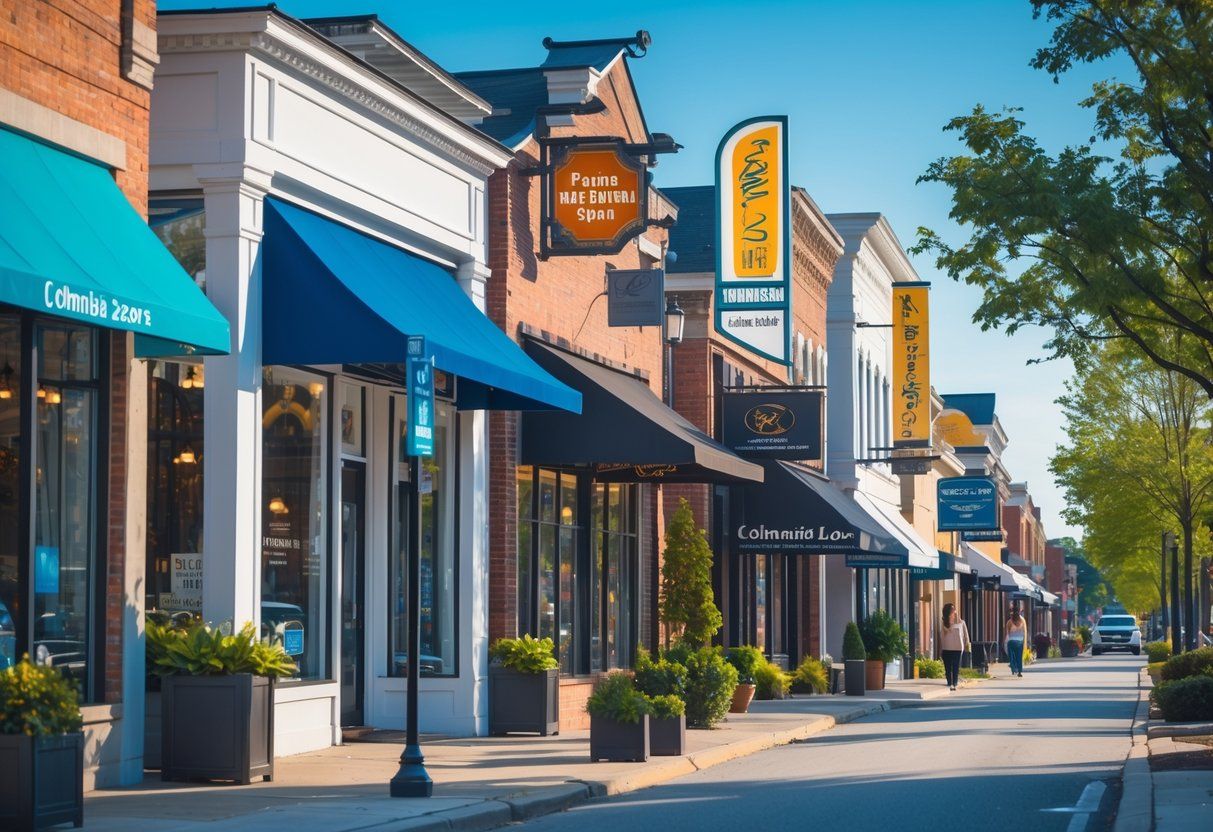
Columbia businesses have many options for storefront signs to attract customers. Different signs offer unique benefits based on visibility, branding needs, and location.
Choosing the right type helps improve foot traffic and brand presence.
Channel Letter Signs and Lightbox Signs
Channel letter signs use individual, three-dimensional letters mounted on buildings. These letters often have internal lighting, making them visible at night.
They are excellent for businesses wanting a professional, clean look that stands out. Lightbox signs have a lit box frame with graphics inside showing the business name or logo.
They are brighter than flat signs and work well for stores that want high visibility during dark hours. Both types are durable and fit well with retail signage needs.
Blade Signs and Awning Signs
Blade signs project outward from the building, usually mounted above sidewalks or entrances. They help pedestrians see the store from a distance or along the street.
Blade signs are good for tight spaces where flat signs might be missed. Awning signs combine a fabric covering with printed logos or branding.
They provide shade and weather protection while advertising the business. Awnings can be simple or custom-designed for style and useful as wayfinding signs.
Window Graphics and Vinyl Banners
Window graphics use clear or colored vinyl to apply logos, hours, or promotions directly to glass. These signs maximize unused glass space and attract customers without blocking light.
They are a cost-effective option for highlighting sales or services. Vinyl banners are flexible, temporary signs made from weather-resistant materials.
They can be hung or attached to building fronts for seasonal events or promotions. Vinyl banners are ideal for short-term marketing and quick message changes.
A-Frame Signs and Sidewalk Signs
A-frame signs, also called sandwich boards, stand on sidewalks and feature double-sided graphics. They are portable and often used for daily specials or work well in busy downtown areas.
Sidewalk signs include any ground-level, movable signs designed to catch foot traffic. These signs come in many materials and styles.
They help small businesses create quick attention and are often paired with permanent building signs.
Strategies to Maximize Brand Presence and Customer Impact
Effective storefront signs combine clear branding, smart placement, and features that engage customers. These elements work together to boost visibility and promote a professional image in Columbia, SC.
Branding and Brand Recognition
Strong branding starts with consistent colors, fonts, and logos in signage design. This consistency helps customers quickly recognize the business and build trust.
Using bold, clear fonts and simple messages makes signs easier to read from a distance. High contrast between text and background improves visibility in different lighting, especially during busy hours.
Including a tagline or unique graphic tied to the brand can increase memorability. This supports marketing efforts by reinforcing the store’s identity every time someone passes by.
Proper Placement and Strategic Positioning
Placing signs where foot traffic is highest increases their impact. Storefront signs should face main streets or entrances to catch the attention of pedestrians and drivers alike.
Signs positioned at eye level or slightly above are easier to notice. Avoid placing signs too high or obstructed by trees or poles.
Lighting around signs enhances visibility during the evening. Combining natural and artificial light ensures the sign remains effective throughout the day and night.
Enhancing Customer Experience
Clear and professional signage helps customers find and enter the store without confusion. Signs that highlight sales, services, or store hours improve communication.
A clean, well-maintained sign reflects a professional image, encouraging customers to trust the business. Using durable materials also prevents damage that can harm brand reputation.
Signs that complement the overall storefront design create a welcoming atmosphere. This positive impression can increase the time customers spend in the store.
Integrating Interactive Elements
Adding interactive elements like QR codes on signs connects customers to online promotions or menus. This bridges physical signage with digital marketing.
Motion-activated lights or digital displays grab attention and provide dynamic content. These features can highlight limited-time offers or special events.
Interactive signage engages customers more deeply, making the store stand out in a competitive market. It encourages engagement while showcasing the brand’s innovation.
Frequently Asked Questions
Choosing the right storefront sign involves following local rules, picking materials that last, and designing for clear visibility. Maintenance and local vendor options also affect how well a sign performs over time.
What are the legal regulations for storefront signs in Columbia, SC?
Columbia has specific rules about sign size, lighting, and placement. Signs usually require a permit from the city.
Businesses must follow zoning laws and avoid obstructing sidewalks or views. Checking with the Columbia Planning Department is necessary before installing signs.
How can businesses choose the most effective storefront sign design?
The sign should match the brand’s style and be easy to read from a distance. Using simple fonts and high contrast colors helps with visibility.
Including the business name and logo clearly is important. Lighting the sign properly also improves its impact.
What materials are best for durable outdoor signage in Columbia’s climate?
Materials like aluminum, acrylic, and PVC are good for outdoor signs. They resist rain, sun, and humidity common in Columbia.
Weather-resistant coatings can protect signs from fading or damage. This extends the life of the sign.
Are there any local Columbia sign companies that specialize in custom neon signs?
Yes, several Columbia firms focus on neon signs. They offer custom designs tailored to business needs.
These companies often provide design, installation, and repair services for neon and LED signs.
What maintenance is required for storefront signs to ensure longevity?
Regular cleaning removes dirt and debris. Checking electrical parts prevents lighting issues.
Signs should be inspected for damage after storms or extreme weather. Prompt repairs help avoid bigger problems.
How does the size and placement of a storefront sign impact visibility to customers?
Larger signs are easier to see from farther away.
Placing signs at eye level or above entrances draws more attention.
Signs should not be blocked by trees, poles, or other structures.
Strategic placement increases customer traffic.…
